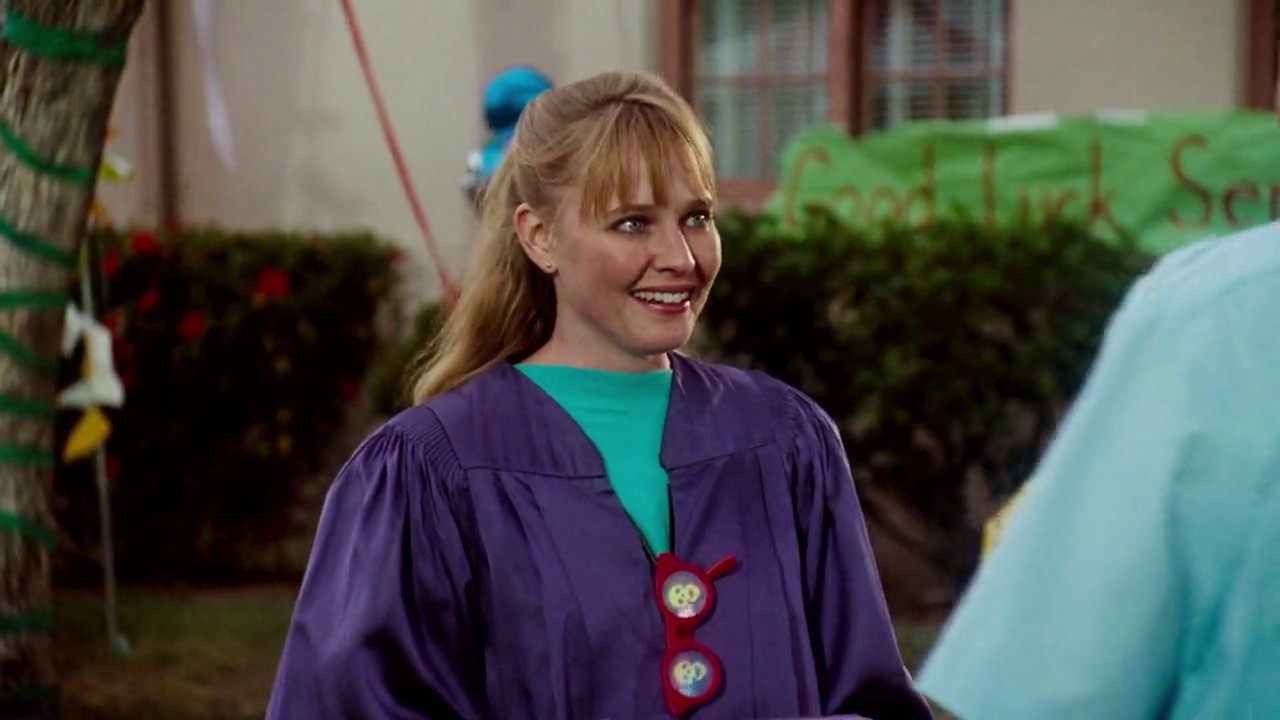Repeating the same formula again and again in a franchise
normally doesn't work. This has been proven time and time again in several
genres. Most commonly, horror films suffer the most from this trend. Even then,
some series have turnarounds. When A Nightmare on Elm Street 3: Dream Warriors
(1987) was released, critics and fans were impressed. Although A Nightmare on
Elm Street 4: The Dream Master (1988) was not as well received as its
predecessor, the film managed to further the story of the teens that had
connected lines to Freddy Krueger. The dream sequences continued to be
imaginative, the kills remained inventive and the music continued to be creepy.
Surprisingly even after that film, the next entry maintains its credibility. It
still doesn't match the third or first film but it is still a decent watch.
Directing this installment was Stephen Hopkins. Hopkins would later go on to
direct films like Predator 2 (1990),
Blown Away (1994), The Ghost and the Darkness (1996) and Race (2016).
 |
| Fetus Freddy |
The story picks up sometime after the events of the prior
movie. Alice (Lisa Wilcox) is graduating school with her boyfriend Dan (Danny
Hassel). Accompanying them are their classmates Yvonne (Kelly Jo Minter), Greta
(Erika Anderson) and Mark (Joe Seely). One night Lisa begins having nightmares
again implicating that Freddy Krueger (Robert Englund) has risen from his
grave. Fearing the worst, people begin having near death experiences, which
causes Alice to go into a panic. What confuses Alice is that Freddy is also
appearing when she's awake. Somehow he found a loophole. This time, Leslie
Bohem wrote the screenplay. For the most part, Bohem's script is adequate
enough to advance the story but misses significant points. The most major of
issues arise from the continuity. Although Alice and Dan are returning
characters, the three new ones don't seem to know much about Freddy Krueger.
How is that possible when all of these events occur in the same location for
the past four films?
On top of that, there are moments where some of those
characters know how to combat Krueger in their dreams. Yet they would not know
that because that was taught in the third film. Lastly, the dream sequences are
rather disappointing. This does not consist of all dreams but some of them come
off more campy than they do bizarre and horrific. There are some arrangements
that get creatively dizzy but its only at the finale. Aside from this, the
script doesn't create any other big mistakes. Bohem would later write for
movies like Daylight (1996), Dante's Peak (1997) and The Darkest Hour (2011).
The actors were a credible aspect to the movie. This entry does not contain
teens looking to fornicate, instead they persist to be defined by their
personalities. Lisa Wilcox as Alice is still a likable lead and grows as the
main heroine. Dan Hassel as Alice's boyfriend is also the least stuck up jock.
That's also an amiable trait. Greta, Yvonne and Mark are not the greatest of
individuals when it comes to development but they do help.
Nicholas Mele also returns as Alice's father. He even
develops as a supporting character. Finally Robert Englund as Freddy Krueger
prevails as the antagonist of dreams. Over time his dialog has become more
jocular than serious and that has produced mix results. On one side, the comic
lines cause some good laughs. On the other hand, being too comical makes the
film sound less grounded and more like a parody. When a baby Krueger spud
decides to crawl around the floor, it looks far less intimidating. A few puns
here and there is okay, but doing it one too many times in a scene wears out
its welcome fairly quickly. Nevertheless Englund will and forever be Freddy
Krueger. The effects are another satisfying component to the entry. Gore may
not be as abundant as the last entry but the dreams and kills are still
horrific to a degree. Much of the props and sets are made with practical
effects and visually it looks good. The level of gore may not please gorehounds
though who want the violence.
 |
| "I'm so happy to be back" |
The camerawork filmed by Peter Levy was competently shot.
The cinematography to the picture contains several shots that focus on either
the dream realm or reality itself. Each scene has the proper amount of lighting
and scope to show the viewer what there is to focus on. Peter Levy has also
worked with director Stephen Hopkins multiple times for the same films like
Predator 2 (1990) and Race (2016). He has also done other projects like
Ricochet (1991) and Cutthroat Island (1995). Composing the score to the film
was Jay Ferguson. Thankfully Ferguson reused the main theme Charles Bernstein
successfully created from the first film. As for the score in its entirety, it
has a number of cues that are creepy, using synths. However, there are a few
tracks that come off less creepy and more pop like. Not exactly what one would
expect from a horror score. Jay Ferguson has also composed scores to films like
Johnny Be Good (1988) and Tremors II: Aftershocks (1996). It's not the best of
the nightmare scores but it does work.
Points Earned --> 6:10
No comments:
Post a Comment